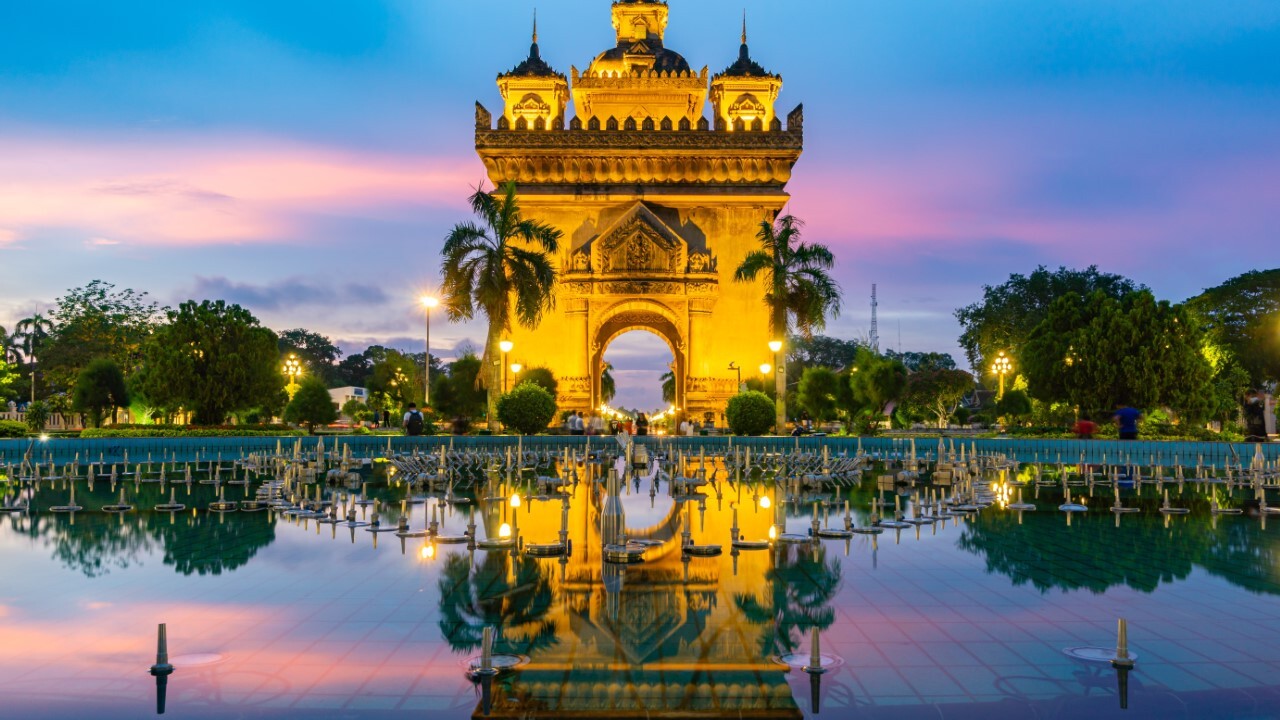
Laos, a landlocked gem in Southeast Asia, often flies under the radar compared to its neighbors. But this country, rich in culture and history, holds many surprises. Did you know that Laos is the only landlocked country in Southeast Asia? Or that it’s home to the mysterious Plain of Jars, an archaeological wonder? Laos boasts lush landscapes, from the Mekong River to the Annamite Mountains. Its capital, Vientiane, offers a blend of French colonial architecture and Buddhist temples. Laos also has a unique New Year celebration called Pi Mai, marked by water fights and parades. Ready to learn more? Let's dive into 20 fascinating facts about this captivating country!
Key Takeaways:
- Laos, a landlocked country in Southeast Asia, is known for its stunning landscapes, rich biodiversity, and unique cultural heritage. It's the only landlocked country in Southeast Asia, surrounded by China, Vietnam, Cambodia, Thailand, and Myanmar, with no coastline. The Mekong River runs through Laos, crucial for transportation, agriculture, and fishing. Laos has extensive forests, numerous waterfalls, and a rich cultural heritage influenced by Buddhism and indigenous traditions.
- Despite being one of the poorest countries in Asia, Laos has made significant strides in economic development. Agriculture is a major sector, with about 70% of the population working in agriculture, mainly growing rice. Laos also has rich mineral resources, a growing tourism industry, and is part of ASEAN, benefiting from regional cooperation and trade. Hydropower is a key industry, with numerous dams on the Mekong River generating electricity for domestic use and export.
Geography and Nature
Laos, a landlocked country in Southeast Asia, is known for its stunning landscapes and rich biodiversity. Here are some fascinating facts about its geography and natural beauty.
-
Laos is the only landlocked country in Southeast Asia. Surrounded by China, Vietnam, Cambodia, Thailand, and Myanmar, it has no coastline.
-
The Mekong River runs through Laos. This major river is crucial for transportation, agriculture, and fishing.
-
Laos is home to the Annamite Range. These mountains stretch along the eastern border, creating a natural barrier with Vietnam.
-
The country has extensive forests. About 70% of Laos is covered in forests, making it one of the most forested countries in the region.
-
Laos boasts numerous waterfalls. Tad Fane and Kuang Si are among the most famous, attracting many visitors.
Culture and Traditions
Laos has a rich cultural heritage influenced by Buddhism and indigenous traditions. Let's explore some cultural facts.
-
Buddhism is the dominant religion. About 67% of the population practices Theravada Buddhism, which deeply influences daily life and festivals.
-
Laos celebrates Pi Mai. This Lao New Year festival in April involves water fights, parades, and traditional music.
-
The Lao language is the official language. It's spoken by the majority and uses the Lao script, which is similar to Thai.
-
Sticky rice is a staple food. Known as "khao niao," it's eaten with almost every meal and often served in woven baskets.
-
Laos has a unique traditional dance called Lamvong. This circle dance is performed at celebrations and social gatherings.
History and Politics
Laos has a complex history shaped by colonization, war, and political change. Here are some key historical and political facts.
-
Laos was a French colony. From 1893 to 1953, it was part of French Indochina, which also included Vietnam and Cambodia.
-
The country gained independence in 1953. After years of struggle, Laos finally became a sovereign nation.
-
Laos experienced a civil war. From 1959 to 1975, the country was embroiled in conflict between the Royal Lao Government and the communist Pathet Lao.
-
The Lao People's Democratic Republic was established in 1975. The Pathet Lao took control, and the monarchy was abolished.
-
Laos is a one-party socialist republic. The Lao People's Revolutionary Party is the only legal political party.
Economy and Development
Despite being one of the poorest countries in Asia, Laos has made significant strides in economic development. Here are some economic facts.
-
Agriculture is a major sector. About 70% of the population works in agriculture, mainly growing rice.
-
Laos has rich mineral resources. The country has deposits of gold, copper, and tin, which are important for its economy.
-
Tourism is growing. Attractions like Luang Prabang, Vang Vieng, and the Plain of Jars draw many visitors each year.
-
Laos is part of ASEAN. As a member of the Association of Southeast Asian Nations, it benefits from regional cooperation and trade.
-
Hydropower is a key industry. The country has numerous dams on the Mekong River, generating electricity for domestic use and export.
Final Thoughts on Laos
Laos is a country full of rich culture, stunning landscapes, and unique traditions. From the mysterious Plain of Jars to the vibrant festivals like Boun Pi Mai, there's always something fascinating to learn. The Mekong River plays a crucial role in daily life, providing both sustenance and transportation. Buddhism deeply influences the nation's customs and architecture, evident in the beautiful temples scattered across the land. Laotian cuisine, with its bold flavors and fresh ingredients, offers a delightful culinary adventure. Despite its small size, Laos boasts a diverse ecosystem, home to many rare species. Whether you're interested in history, nature, or food, Laos has something to offer. So, next time you're planning a trip or just curious about the world, consider exploring more about this enchanting country.
Frequently Asked Questions
Was this page helpful?
Our commitment to delivering trustworthy and engaging content is at the heart of what we do. Each fact on our site is contributed by real users like you, bringing a wealth of diverse insights and information. To ensure the highest standards of accuracy and reliability, our dedicated editors meticulously review each submission. This process guarantees that the facts we share are not only fascinating but also credible. Trust in our commitment to quality and authenticity as you explore and learn with us.


